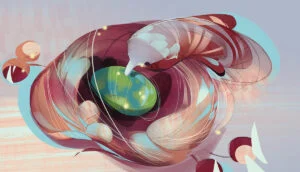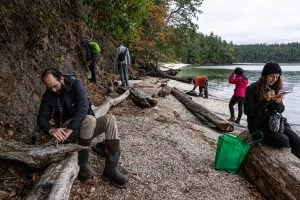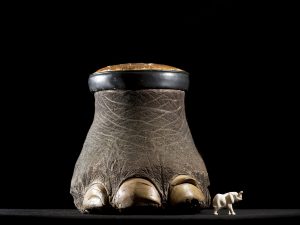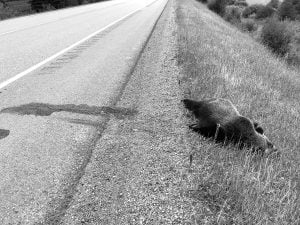
Environment
The sixth extinction
The planet is in the midst of drastic biodiversity loss that some experts think may be the next great species die-off. How did we get here and what can be done about it?
- 4895 words
- 20 minutes
This article is over 5 years old and may contain outdated information.
Wildlife

We’re just ten minutes into a walk next to the Ruisseau de la Brasserie when a hip-wader-clad Daniel Toussaint emerges from the bushes, proudly holding his hand out. Toussaint, a biologist with Ressources naturelles du Quebec, is carrying a crayfish about eight centimetres long, found under a rock in the stream. Once identified, it would be recorded as one of dozens, or even hundreds (numbers are still being tallied), of species counted that day in and around just one tiny offshoot of the Ottawa River.
Last week, Toussaint and other experts guided volunteers and the curious public on walks along the stream in what is known as a “bioblitz,” a 24-hour quest to document as much of the life as possible in a given area. A bioblitz helps give scientists an idea of what lives where, but it also gives the public a chance to see just how much life exists within walking distance of home.
The Ottawa Riverkeeper organized the bioblitz at the Ruisseau de la Brasserie, but organizations across the country hold similar events. Regular bioblitzes happen in Vancouver and Whistler, and the Canadian Wildlife Service is in the process of developing a protocol to make it easier for groups to organize their own local bioblitzes.
Do you know of a bioblitz in your own community? Let us know in the comments below!









Are you passionate about Canadian geography?
You can support Canadian Geographic in 3 ways:

Environment
The planet is in the midst of drastic biodiversity loss that some experts think may be the next great species die-off. How did we get here and what can be done about it?

People & Culture
Naming leads to knowing, which leads to understanding. Residents of a small British Columbia island take to the forests and beaches to connect with their nonhuman neighbours

Wildlife
An estimated annual $175-billion business, the illegal trade in wildlife is the world’s fourth-largest criminal enterprise. It stands to radically alter the animal kingdom.

Wildlife
This past summer an ambitious wildlife under/overpass system broke ground in B.C. on a deadly stretch of highway just west of the Alberta border. Here’s how it happened.